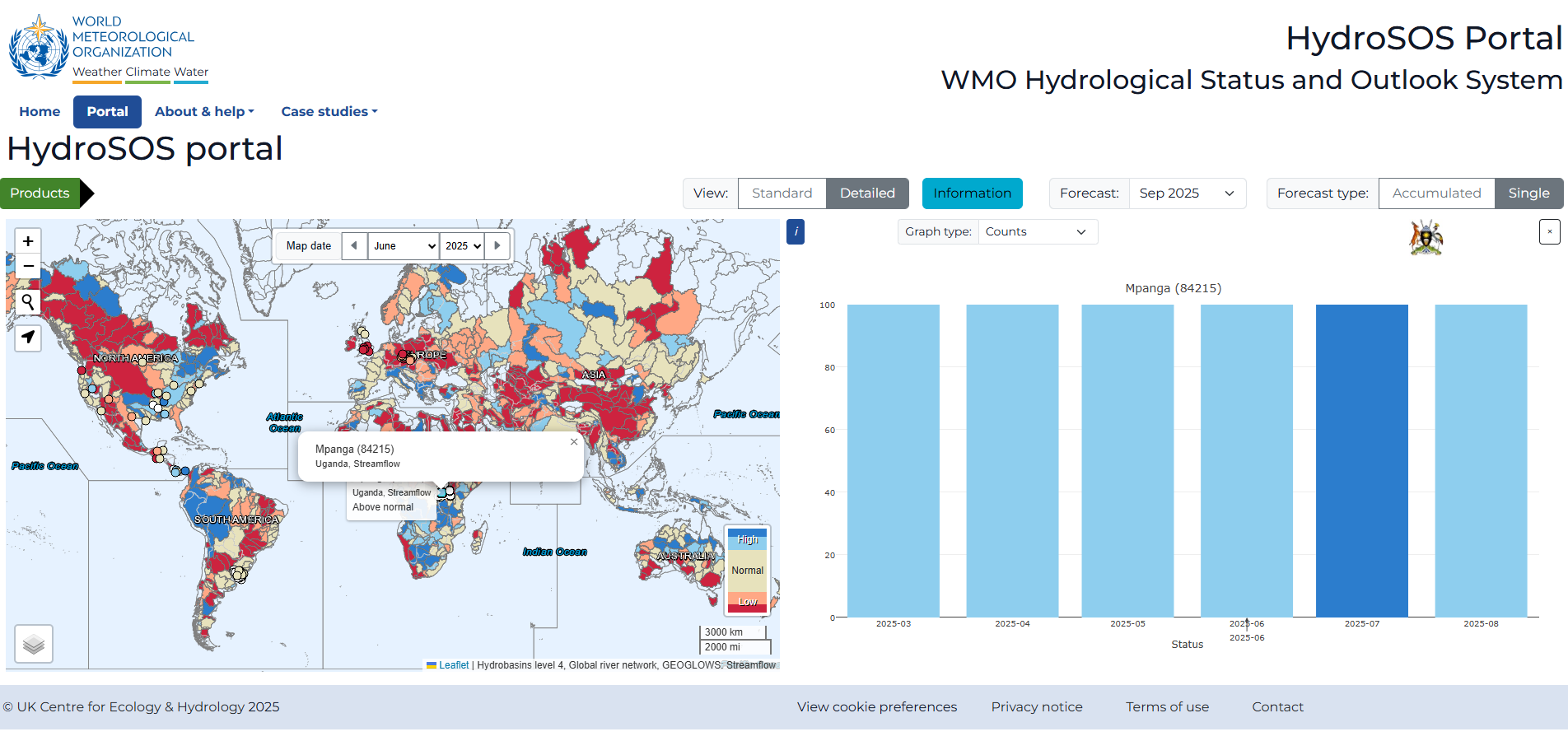The global water cycle has become increasingly erratic and extreme, swinging between deluge and drought, according to a new report from the World Meteorological Organization (WMO).
State of Global Water Resources 2024 is an authoritative annual assessment of river flows, reservoirs, lakes, groundwater, soil moisture, snow and ice. It drew on data and insights provided by institutes involved in meteorological or hydrological science and monitoring across the world including the UK Centre for Ecology & Hydrology (UKCEH).
The annual report notes there were wetter-than-normal conditions in central, western and eastern Africa as well as parts of Asia and Central Europe, while southern Africa and parts of South America were gripped by severe drought in 2024, the hottest year on record. Brazil experienced simultaneous extremes, with catastrophic flooding in the south taking 183 lives and the continuation of the 2023 drought in the Amazon basin.
Shift from wet to dry conditions
In the UK, there has been a shift from very wet weather in 2024 to exceptionally hot and dry conditions so far this year. This is consistent with climate change; where in some places around the world we are already seeing more extreme events as a warmer atmosphere results in more prolonged dry conditions but also holds more moisture, resulting in more intense rainfall periods. Though in the UK the picture is more mixed.
UKCEH senior hydrological analyst, Lucy Barker, a member of the WMO report’s steering committee, said: “Weather is naturally variable which can mask impacts of climate change. Long-term monitoring in the UK, as well as elsewhere in the world, is crucial for not only assessing the current status of our water resources and environment and how this may change, but also detecting long-term trends and future changes in the severity of floods and droughts.
“This supports effective and proactive water management so we can be better prepared for what the future holds.”
Cascading impacts
Analysis in the report, State of Global Water Resources 2024, reveals:
-
Only one third of river basins had normal conditions in 2024, meaning most had too much or too little water, reflecting the increasingly erratic hydrological cycle.
-
Nearly all out of selected 75 main lakes across the globe saw above or much above normal temperatures in July, affecting water quality.
-
Africa’s tropical zone experienced unusually heavy rainfall in 2024, with flooding resulting in 2,500 deaths and 4 million people displaced.
-
Europe experienced its most extensive flooding since 2013, with one-third of the river networks exceeding high flood thresholds.
-
Asia and the Pacific were hit by record-breaking rainfall and tropical cyclones, resulting in over 1,000 deaths.
-
It was the third straight year of widespread glacier loss across all regions, resulted in enough meltwater to fill 180 million Olympic swimming pools, adding 1.2mm to global sea level in a single year.
The report highlights the cascading impacts of too much or too little water on economies and society, and says there is a critical need for improved monitoring and data sharing, which can then inform national and local management of water resources.
WMO Secretary-General Celeste Saulo said: “Water sustains our societies, powers our economies and anchors our ecosystems. And yet the world’s water resources are under growing pressure and – at the same time – more extreme water-related hazards are having an increasing impact on lives and livelihoods.
“Reliable, science-based information is more important than ever before because we cannot manage what we do not measure.”

Improving global monitoring
Future annual reports are anticipated to include even more observational data, supported by initiatives like the Global Hydrological Status and Outlook System (HydroSOS). This WMO initiative, coordinated by UKCEH, involves supporting hydrologists across the world to regularly monitor and analyse the current status of water resources in their countries and regions and how they may change over the coming months.
HydroSOS draws on the example of the UK’s Hydrological Summary and Hydrological Outlook reports, produced each month by UKCEH and partners. We have also developed a range of free, interactive online tools including our UK Water Resources Portal.
Professor Harry Dixon, UKCEH’s Associate Director of International Research & Development, and the UK’s Hydrological Adviser to WMO said, “UKCEH is recognised as a world leader in data collation and analysis of water resources. We are pleased to be continuing to work with WMO and international partners to improve hydrological monitoring at local, national and global level over the coming years.”
Professor Dixon added UKCEH contributed to the WMO report and HydroSOS thanks to National Capability for Global Challenges funding from the Natural Environment Research Council.
The report, State of Global Water Resources 2024, is published on the WMO website.
The HydroSOS portal is available at wmohydrosos.ceh.ac.uk